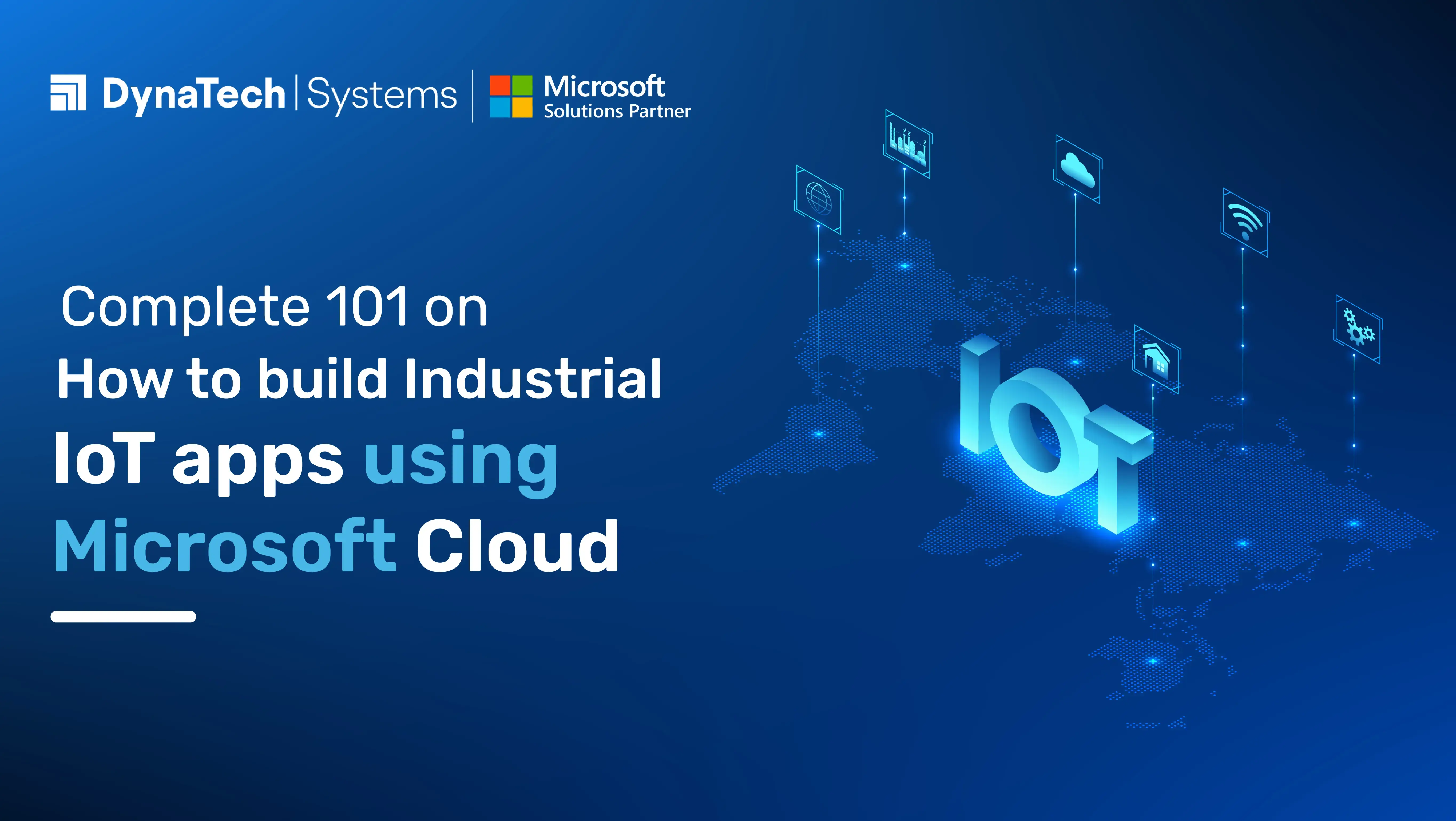The IoT (internet of things) has gained in popularity in recent years as the number of linked devices has expanded significantly. As per trade analysts, worldwide IoT spending will exceed $1 trillion by the end of the year. In this case, the annual compound growth rate will be 21% higher than the prior year. Furthermore, the introduction of smart home automation technology has opened up new economic potential for IoT application development.
The majority of firms use cloud computing services to construct a centrally managed IoT application when it comes to IoT app development. To meet the growing demand for IoT app development, cloud platforms such as AWS, Microsoft Azure, and Google Cloud (GCP) have introduced their distinctive serverless options. Having said that, Microsoft Azure is rightly regarded as a premier service provider for developing cloud-based applications. The Azure IoT Suite allows developers to create, install, and launch robust IoT applications for a variety of business needs.
Manufacturers are under pressure to improve and digitally change in order to stay up with the fast-paced nature of their markets, competitiveness, supply chain difficulties, understaffing, and productivity demands. They must do it by using IoT, which makes all of this possible at scale. However, in order to fully capitalize on this potential, producers must master an entirely new set of capabilities and technology. Having said that, let’s learn how Microsoft cloud, powered by Azure and its internet of things (IoT) services will be able to guide them thru the transition into the new era of digitization.
Challenges that arise during digital transition
Many customers face similar technological issues when it comes to digitally modernizing their company. They must securely connect existing (often outdated) infrastructures and assets across locations via protected multilayer networks. They require a unified controller for both their OT components as well as their IT infrastructure to ensure security as they integrate IT and OT.
The heterogeneous structure of their IT/OT systems poses unique problems as they attempt to synergize IoT insights with legacy IT and OT data, unify these data silos for analytics, automate workflows and processes, and establish supply chain resilience.
They must empower their frontline workers by modernizing and automating their processes.
How can Microsoft Cloud evolve manufacturing and IIoT platform?
It is proven that Microsoft Cloud has aimed to empower every company and understood that each sectors have unique requirements that must be met. Industry Clouds has been created to guarantee that Microsoft has an end-to-end prescription for how clients in different sectors may accomplish business results.
Further, businesses can build and develop industry-specific cloud solutions on the platform that includes intelligent edge-to-cloud technologies with built-in security, privacy, and compliance. Build intelligent environments that enable you to connect, monitor, automate, and model devices and apps using the Microsoft Cloud to drive change and achieve targeted business goals.
1. Get Started with pre-configured devices
The preconfigured solutions in the Microsoft Cloud are implementations of typical IIoT solution patterns such as remote monitoring and predictive maintenance. These are comprehensive, production-ready solutions with simulated devices, Azure services, and solution-specific administration consoles. You may download the source code and configure a solution to match your unique IIoT requirements in addition to deploying and operating the solutions.
2. Connect multiple devices
Azure IoT Hub which is part of Microsoft Cloud; connects seamlessly with existing devices and supports a wide range of operating systems and protocols. It allows you to send thousands of bidirectional messages to various devices using a mobile push notification system. A device must identify itself to IoT Hub using correct credentials in order to connect with the solution back end.
To get started, business can utilize Azure IoT Starter Kits, which comprise development boards with sensors and actuators. Alternatively, you may select from hundreds of Certified for IIoT devices that are platform-independent and have been validated to effortlessly connect to IoT Hub.
3. Visualize and Analyze data
It is feasible to mix data from IoT Hub with other data sources and processing engines using Azure Event Hubs without sacrificing the streaming aspect of the calculations. You may also write incoming messages from your IoT hub to Azure Table storage using an Azure function app.
For stream ingestion, Stream Analytics directly connects to Event Hubs and IoT Hubs, and it consumes historical data into the Azure Blob service. Use Stream analytics in conjunction with PowerBI or Azure Machine learning for predictive analytics to gain real-time insights into your company operations and device performance. For sophisticated analytics, businesses with experience in open source solutions can leverage HDInsight or Apache Spark.
Integration of several line-of-business systems can give useful insights from your operational data, allowing you to make better decisions. Past telemetry data can be utilized to spot trends that suggest repair is necessary, or to issue an automated turn-off instruction if a temperature rises above average.
4. Superior security
Devices must initially be registered and have proper credentials for both azure-to-device and device-to-azure messaging. Azure IoT has an identity registry that holds authentication and security data for each IoT device. It is maintained separately from other device metadata to prevent unauthorized access to IoT device identity information. The device credentials may be obtained from the solution dashboard and included in your client application.
5. Scale with proficiency
Begin with the Adafruit Raspberry Pi 3 package, which includes spreadsheets, word processing, and video games. It is powered by Windows 10 and has all required sensors and components. Alternatively, Seeed – Intel Edison Kit is suited for prototype applications or commercial solutions when performance is critical. Scale to larger deployment after the proof-of-concept project is successful.
Furthermore, businesses only pay when they use the resources. As a result, starting with a Proof of Concept is a highly cost-effective and practical way to understand how Azure IoT can assist you in creating a successful IoT deployment.
With over 100 Azure datacenters, Microsoft Cloud ensures that your apps are always available. To give the greatest performance, Microsoft employs many data centers to decrease latencies and store information closer to the device’s location. You may first localize the solution before scaling it to various regions.
Reasons to switch for Microsoft Cloud
Visibility of operations and assets
One of the primary business goals that manufacturers typically strive for when deploying Industrial IoT is to increase visibility across linked manufacturing assets and processes in order to improve equipment efficiency and labor productivity across locations. Line employees, operations and regional managers, and supervisors can benefit from such operational and asset visibility provided by developers, architects, and process engineers.
Customer service and product quality
Aside from improving visibility into operations and asset efficiency, Industrial IoT enables insights into better product quality and customer service. With the correct services and tools, as well as the power of the Cloud, it is feasible to more quickly and efficiently discover product defect causes, follow a customer-reported issue all the way down to the moment and location where a faulty product was made.
Enhanced results of OT data with 3D visualization
There are several methods to see and interact with data, and the complexity of machinery in manufacturing may make showing data to various sorts of users a major issue. 3D display of data gathered from assets and processed in real time, combined with the insights gained from this analytics, enables new levels of efficiency, safety, and productivity.
Maintenance and production operations
Frontline worker empowerment is critical to industrial success. Allowing them to do routine maintenance and resolve production issues more quickly boosts overall production effectiveness and uptime. Azure IoT Central, for example, provides a simple, yet robust and customized interface for interacting with assets. Frontline workers and supervisors may quickly create rules that activate workflows depending on their surroundings and history. IIoT also enables for increased safety for repair professionals by providing them with communication capabilities that allow them to rapidly obtain remote support.
Edge intelligence and automation to increase safety and sustainability
Integrating manufacturing assets to the Cloud does not necessitate all analytics to take place in the Cloud. Edge technologies enable the creation and training of models in the Cloud, exploiting the massive quantities of data and resources made accessible, and then deploying and running these models as near to the assets that need to be monitored, managed, or automated as feasible.
The Well-Architected IoT Framework
The Microsoft Industrial IoT platform is made up of many diverse and complimentary services that may be combined in many ways based on the scenario and environment.
At-scale asset connectivity
Microsoft cloud allows to construct a safe and dependable infrastructure for factories throughout the world with a diverse collection of heterogeneous assets after looking at the business targets. Business can utilize the Microsoft IIoT platform. It all begins with securely integrating all assets (existing and new) with as little disturbance as possible while taking into account the unique characteristics of industrial assets (long lifespan, retrofitting of outdated but still in use equipment).
Securing IIoT solutions on a large scale
Manufacturing, by definition, necessitates the separation of the OT infrastructure from the Internet as well as the IT infrastructure. The Microsoft IIoT platform delivers solutions that enable clients to safely digitally transform, from traversing multilayer networks to using virtual networks to providing a single pane of glass to monitor the security of both an IT and OT infrastructure.
Deployment and operation in current and future world of hybrid and cloud ecosystem
Microsoft has embraced the hybrid nature of the Edge and the Cloud as it paves the path for a simpler and more empowering digital transformation. It combines the Industrial IoT platform with current developer and IT tools to enable manufacturers to have better levels of control and transparency, centralize IT and OT management, and keep data and infrastructure services secure and up to date.
The Road Ahead
Internet of Things home automation have a bright and hopeful future. With the growing number of applications for connected devices and industrial use cases, it appears that IoT will become a mainstream technology in the coming years. Simultaneously, cloud platform such as Azure continues to expand, strengthening their compatibility for the internet of things. Connect with the DynaTech Systems here sales@dynatechconsultancy.com to use our expert knowledge about Microsoft Cloud services for the road ahead!




























